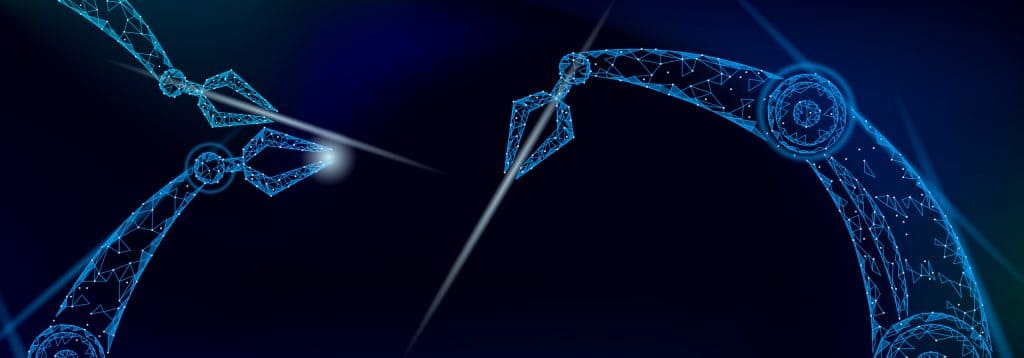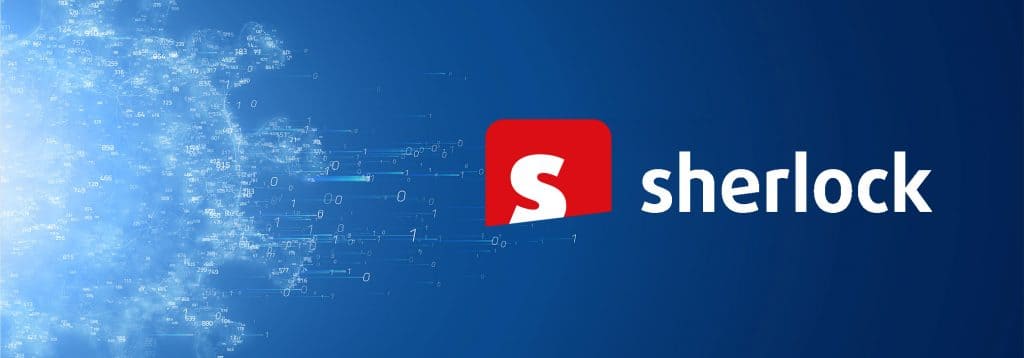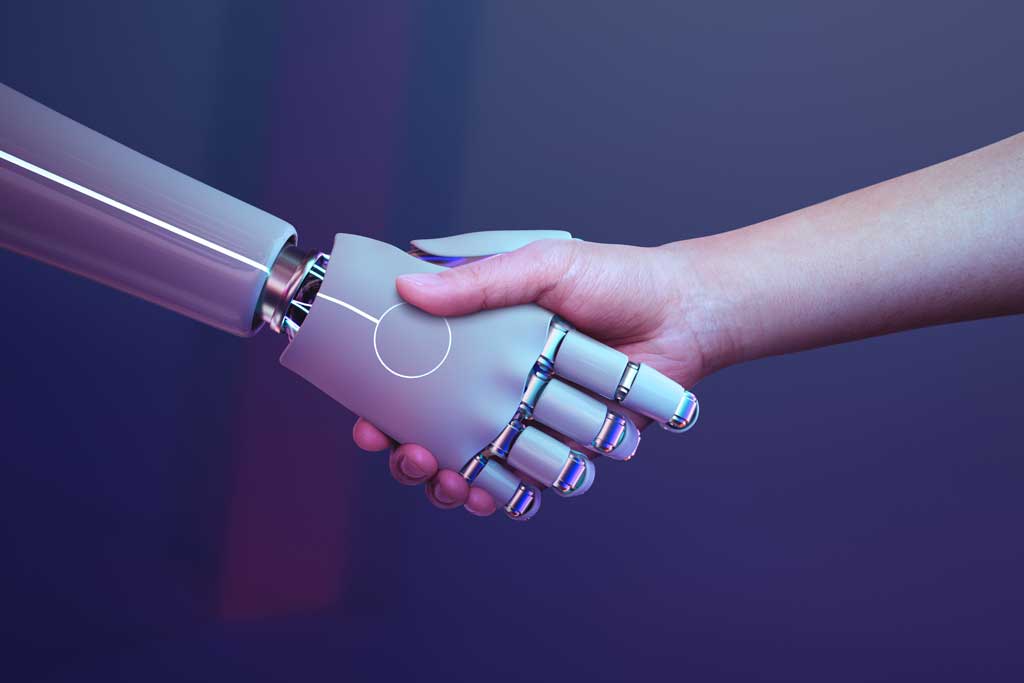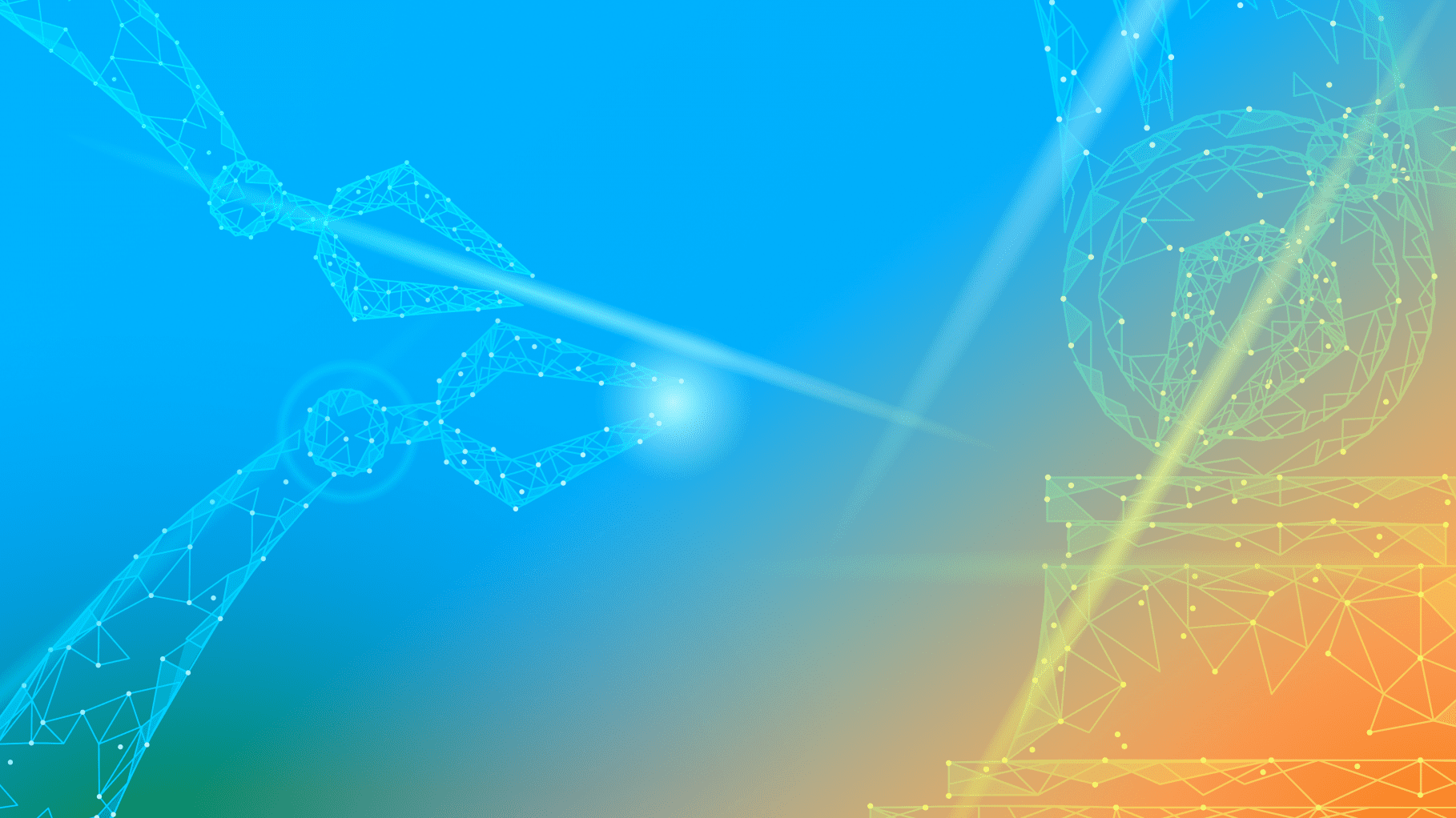1. What is a digital twin?
A digital twin virtually reproduces an object or process that exists in reality. This virtual mirror image recreates the characteristics and behavior of the original as closely as possible.

Whether images of industrial production facilities, robots with gripper arms, aircraft engines, wind turbines, individual prototypes or complete logistics processes - digital twins are now very common in business and form an important part of Industry 4.0.
But what is the story behind all that? As a rule, digital twins are formed from technical data and algorithms. If the model of a digital twin already exists in reality, it is usually connected to sensors in order to display real-time data and environmental changes. In addition, a digital twin can contain simulations to map certain processes or provide digital "services" to users.
What began with the collection and storage of corporate data has long since ceased to be limited to the server closet in the basement. Sensors are everywhere, and telemetry data is collected not only from smart, networked products, but for entire business processes and systems. With augmented reality and other technologies that place people at the center, there are even digital connections to people in the process.
The result is that such data exists in silos, each with limited context, which in turn diminishes the value of the data. In recent years, companies have recognized the need to integrate this new data. At the same time, they face the challenge of doing so in a scalable and effective manner. The cost of system integration of that data is rising rapidly year after year and represents an ever-increasing portion of industrial companies' spending. By now, the value of the centralization and Simplification of the process of finding and analyzing information is well known. In addition to universal data access, companies are also realizing that exploring the relationships between related data sets and insights provides a higher level of order than each individual set on its own. This data unification is a necessary prerequisite for building a digital twin and is often referred to as a digital thread.
| Component twins or partial twins | The basic unit of a digital twin is component twins. In short, they are the smallest functioning component of a digital twin. Examples include valves or sensors. Partial twins are roughly the same thing, but refer to components of somewhat lesser importance. |
| Asset-Twin | An asset twin is when two or more components work together. The advantage of asset twins is that you can observe and study the interaction of these components. This collects a wealth of performance data that can be processed and then turned into actionable insights. Asset twins can receive information from component twins or be a collection of components or sub-twins themselves. In application, asset twins differ from component twins in that the interaction of the various twins allows processes and a portion of a system to be examined. |
| System- or uni twin | The next level of the Digital Twin is a system or unit twin. By means of the system twin, it becomes possible to map different resources together in a whole functioning system. System twins provide insight into how assets interact and can suggest performance improvements. An example of a system twin would be a factory. A system twin combines all units that are necessary for a production. |
| Process twins | Process twins are at the macro level. They show how systems work together to create an entire production facility. Important questions are answered: Are these systems all synchronized to operate at peak efficiency, or do delays in one system affect others? Process twins are ideal for determining accurate schedules that ultimately affect the overall effectiveness of a business. |
2. These are the advantages of a digital twin
What are the benefits of digital twins and what are the goals behind them? A digital twin can be a very useful helper when it is not possible to carry out maintenance or settings on machines on site. By the way, you don't necessarily need a Corona pandemic for that. Companies with multiple sites also benefit from digital models to remotely perform simulations or change the settings of the respective equipment. The case can arise, for example, if the right employees are not on site with the necessary skills to carry out a repair. This opens up an enormous number of possibilities for location-independent work or even global collaboration.

Digital object twins can also be very useful when it comes to prototypes. For example, imagine a new car manufacturer on the market that is developing a brand new electric car. With the help of a digital model, the engineers can adjust and optimize the vehicle as often as they like without actually having to produce it as a real prototype each time.
The digital image of a physical object enables regular optimization over the entire life cycle. Whether it's signs of use, user requests, customer complaints or new requirements - the Digital Twin enables prototypes and production processes to be optimized over a very long period of time.
These factors lead to cost savings and pave the way for further innovation worlds and business models. Manufacturing companies in particular can thus benefit from decisive competitive advantages.
Another plus point? Maintenance and repairs of large production systems can be very time-consuming and swallow up high costs. Digital twins can help predict system failures and initiate automatic repair processes before any damage occurs. In this case, the combination with virtual reality (VR) or augmented reality (AR) in particular opens up a wide range of possibilities.
3. The useful combination with VR and AR
With VR, for example, it is possible for B2B customers to gain realistic insights into the plans of a large, industrial plant even before it is built. For example, they can use VR software to view the digital twin of the future machine and get an initial impression of the operation, setup and future processes. The Digital Twin can still be used very usefully after the plant has been built to test production and regularly optimize processes.
Complete virtual tours are also already being used in industry today to view all work steps of a production up to the finished end product.
Ideally, the digital twin is developed in such a way that the respective object can be represented true to scale and later also in real time - just as if the viewer were live in the action or on site during production.

VR glasses are also suitable for displaying digital twins. With the help of VR goggles, it is possible to observe the current position and orientation of objects and to set desired states. This enhanced reality perception enables a factory worker to better grasp industrial applications, for example, and improve them.
In addition, these types of assistance systems also enable inexperienced personnel to gradually approach complex production processes and thus avoid costly errors.
4. The proper data use of digital copies
In many cases, a Digital Twin is coupled to sensors, each of which collects data on the current state, position and orientation. The connection of the real object with the digital twin enables a comparison between the current actual and target state and is used to regulate work processes.
The interface is usually an IoT software (Internet of Things), which is used as a central point. Data from several digital twins can flow in there. This setup is particularly useful for companies with many locations that have several machine parks. Machine operators can use it to keep track of multiple assets at once and read off potential patterns that typically lead to wear and tear or recurring repairs. In this way, the production department can regularly optimize an entire machine park.
5. Prevent accidents before they happen
Ideally, the processes run via predictive maintenance. This is predictive maintenance, in which sensors permanently monitor objects or machines and sound the alarm in the event of even minor irregularities, changes in movement or vibrations, even before the affected part causes a serious defect.
You've probably already noticed - enormous amounts of data are generated here. The availability and sensible use of the data volumes are a decisive prerequisite for successful work with digital twins. In addition, all necessary employees must have easy access. But how can this be achieved? Learn more about the representation of digital twins via Sherlock below.
6. What is a digital twin in the supply chain?
In simple terms, a digital twin of your supply chain is a simulation of your supply chain network.
Currently, and especially in the future, more and more companies will rely on the JOKER Digital Twin in this context. The reason? With the knowledge tapped by means of the digital twin, the supply chain is transformed from a cost center to a significant competitive advantage. The possible applications for testing and taking into account a wide range of contingencies are many and varied. From determining the location of new production facilities or distribution facilities, considering and integrating corporate acquisitions and mergers, to network optimization, a digital twin of a supply chain helps to save costs, reduce emissions and avoid sources of error.
In order to achieve the correct and relevant results, the challenge is to provide the virtual image with the information that underlies your actual value chain. This requires breaking down the data silos of the various departments in order to map workflows and processes correctly and as accurately as possible.
Read the magazine article to find out exactly how you can build a sustainable supply chain and what you need to keep in mind: Nachhaltiges Supply Chain Management einfach erklärt + inklusive kostenlosem Whitepaper.

7. Digital twins via cloud-based information platform
Use Sherlock to get a Digital Twin!
Sherlock is a data integration and information platform that makes data complexity manageable. Sherlock networks data from different departments, platforms and source systems in such a way that they can be accessed both within the company and remotely, via app, by all employees involved. In doing so, Sherlock is able to collect, link and provide all data and information related to machines, processes and people in such a way that it can be easily used by a digital twin application. Sherlock is the foundation for the Digital Twin OR is the Digital Twin.
Are you planning to develop Digital Twins or want to optimize the use of existing ones so that other departments have better access? We would be happy to provide you with further tips and information on the subject of Digital Twins.
8. Your route to the Digital Twin
Along a value chain, there are a variety of possibilities for the use of a digital twin. The use cases are wide-ranging and can be very different. A company that makes optimal use of the Digital Twin tool and integrates it into its strategy can benefit in the long run through cost reductions, low maintenance, early problem detection and prevention of downtime. To guarantee an optimal result, it is recommended to follow the roadmap below:
Define sources, contextualize, align information and data, define workflows, test the Digital Twin.
8.1 Define sources
Die Grundlage eines digitalen Zwillings ist, dass Sie diesen mit realen Daten und Informationen Ihres Unternehmens füttern. Sie als Unternehmen müssen entscheiden, welche Daten als Quelle für Ihren Digital Twin herangezogen werden sollen. Eine Möglichkeit bieten beispielsweise Fertigungsprozesspläne oder Betriebsverfahren und Informationen zu Produktionsumgebungen und internen Prozessen. Die Aufnahme zusätzlicher Quellen in die Definition, z. B. Lieferkettendaten aus einem MES-System, kann den Gesamtkontext des Zwillings verbessern und zusätzliche Anwendungsfälle ohne Nacharbeit erschließen. An diesem Punkt empfehlen wir die Informationsplattform Sherlock. Sherlock macht dabei das Wissen aus verschiedenen Datensilos Ihres Unternehmens zugänglich und bietet somit die beste Grundlage für einen digitalen Zwilling.
8.2 Contextualization
A Digital Twin helps you gain a high-level, powerful view of your data. Once your data silos have been broken down with Sherlock, the data within them placed in the appropriate context, and the use case understood, the unique identification and organization around a single product, process, or person can be mapped virtually. The contextualization thus made possible is then mapped into an overall process, enriched with behavioral data, or used to target desired KPIs.
8.3 Analyzing the data
In order to analyze the data, it is necessary to determine which insights a digital twin is supposed to provide. Precisely defined, the digital twin can be used to draw conclusions about current and future circumstances based on the information it gathers. One learns to take contingencies into account and to open up new perspectives that might otherwise not have been considered. In this way, it is possible to ask the right and, above all, important questions and to answer them in a targeted manner. Such an approach supports you and your company in simulating potential scenarios and optimizing performance results.
8.4 Organize and match data
When organizing the data, the information and findings collected up to this point are used for the first time and integrated into digital processes. At this point, different triggers can be set along a value chain or different production processes. This allows you to create triggers that fire, automate, or instruct different actions depending on the outcome of the response or analysis. For example, you could set up a process trigger to dispatch a technician or create a customer service ticket for a product defect. You could automatically suggest remote configuration updates based on performance characteristics. It's also possible to provide updated KPIs and staff priorities related to customer or supply chain activities. Regardless of what questions you are trying to answer along the value chain, a corresponding trigger can be set up to respond. This makes it possible to capture measurable KPIs and results that can then be used in a real-world implementation.

9. Summary
Many business leaders may be surprised to learn that if you already collect data from your products, processes or people, little additional investment is required to create a basic digital twin. In addition to the necessary digital thread that connects the linked data silos, you may even already have the advanced front ends and analytics capabilities. For example, companies that want to gain real-world insights to improve their product design simply need to securely pass sensor data to product development systems in a compatible format.


